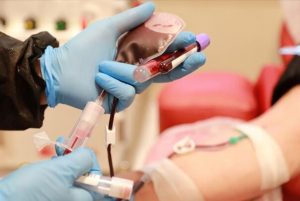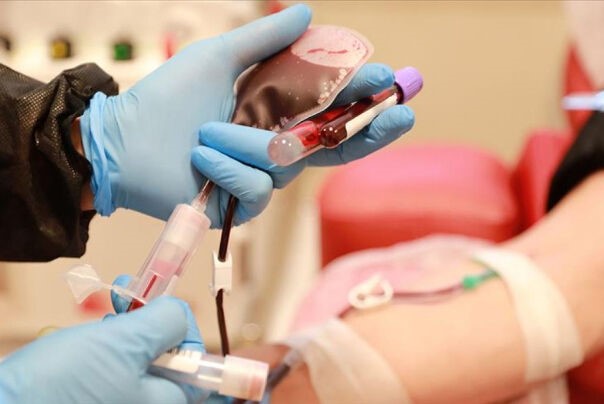Iran 1st Country to Use Plasma Therapy for COVID-19 Treatment

An official in charge said tests using plasma therapy have been carried out on some 200 patients, with dozens having recovered.
“With research work drawing to a close, this method is likely to be used on a larger scale as of next weeks to treat patients infected COVID-19,” said Nasser Riahi, a member of the Presiding Board of the Tehran Chamber of Commerce.
“Before the project got off the ground, we received permits from the Ethics Committee of the Ministry of Health and Medical Education, the Blood Transfusion Organization and the Supreme Blood Transfusion Council; all of those permits were for research projects,” he said.
“Of course, since day one, it was almost clear that injecting the plasma of recovered patients into infected people would be a useful method, which had already been used for patients suffering from diseases such as SARS and Ebola as the only method of rapid treatment,” the official added.
“Our mentality was that the injection of plasma would not harm patients, and that this method had always been used to increase the volume of blood,” he added.
Riahi then touched upon the long history of using plasma for treating different diseases.
“We proposed a research project to answer several key questions; for example, what effect this type of treatment would have on patients in bad condition or on those whose disease had just started, and which group would benefit most, or what effect the treatment would have on controlling fever, shortness of breath and other clinical symptoms of patients,” he added.
Riahi noted that three international hematologists are running the project.
“These experts immediately formed a group comprising dozens of researchers, general practitioners, clinical doctors and therapists, as well as al large number of nurses, lab sciences experts and companies working in the field of plasma,” he added.
“In later stages, contacts were made with international organizations, and, at the end, protocols were drawn up on receiving plasma and the method of clinical treatment.
Accordingly, it was decided that 200 patients be treated using the plasma of recovered people, and that after results are achieved they be published as articles in international journals, so that other countries gripped by the disease will be able to benefit from it, too,” he said.
He said tests have been completed on 200 patients.
“Of course, the detailed results of the research will be released in the coming days by researchers, and another good piece of news is that initial analyses of [data pertaining to] dozens of patients under treatment show they have recovered with this method,” he said.
“The recovery of some of these patients who were in bad condition is like an all-out miracle, and others who were not in very bad condition have recovered, too,” Riahi noted.
He said after the research phase is through, the treatment phase will commence.
“In fact, it is proven in the research phase that this method has positive effects, and its side effects are at an acceptable level,” he said.
“What is important is that antibody levels in the recovered patient remains high for so long, and this level of antibody in plasma has therapeutic effects. Moreover, no more than once a week and no more than 500 to 600 cc of plasma should be taken from the recovered patient. Of course, more than one injection may be needed for treatment,” he added.
“So, it is not that this treatment method can cover all patients, but it will definitely will be announced what patients take priority,” he said.
According to Riahi, a great number of personnel contributed to the project, which came with a very large price tag, too. He said firms from the private sector contributed heavily, too.

